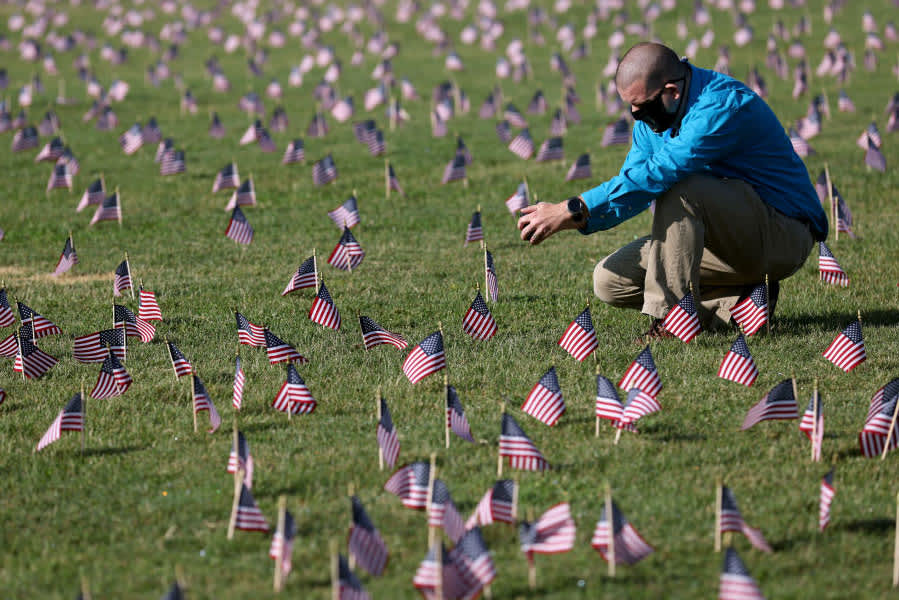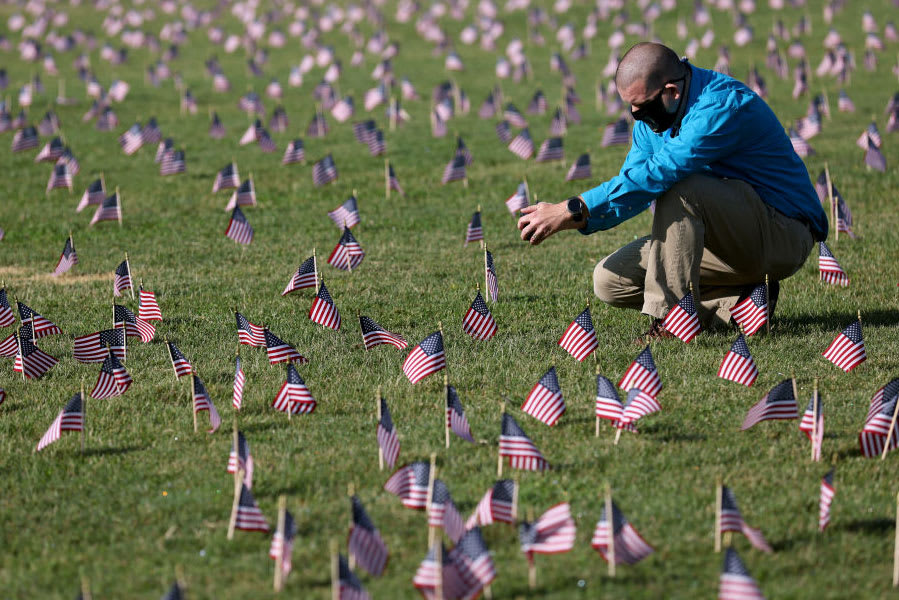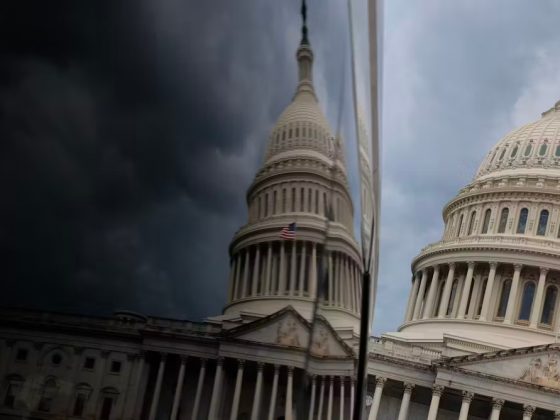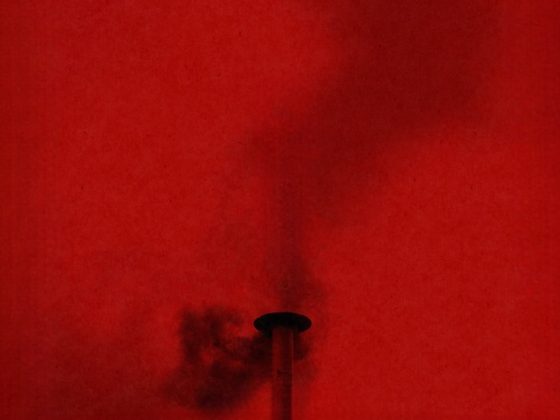The coronavirus, which was first confirmed in the United States about eight months ago, has killed more than 200,000 people across the country as of Tuesday as U.S. officials rush to approve and manufacture a vaccine.
The U.S., which accounts for roughly 21% of all confirmed Covid-19 deaths around the world despite having only 4% of the world’s population, is battling one of the deadliest outbreaks in the world. Fatalities in the U.S. have doubled over the last four months, after the virus took 100,000 lives in the first four months of the outbreak.
Coronavirus deaths have now outpaced the number of American soldiers lost during World War I and the Vietnam War combined, according to the Census Bureau.

The U.S. has reported about 61.09 deaths per 100,000 residents, making it the country with the 11th most deaths per capita, according to data compiled by Johns Hopkins University. Brazil, Chile, Spain, Bolivia, Peru and the United Kingdom among others have all reported more deaths per capita than the U.S., according to Hopkins data.
The virus has disproportionately killed people with underlying health conditions, such as obesity and asthma, and people who are older, according to data collected by the Centers for Disease Control and Prevention. The virus has also disproportionately infected and killed Black and Hispanic people, as well as Native Americans, the CDC says.
The U.S. continues to report worryingly high numbers of new confirmed cases and deaths every day. Over the past seven days, the country has reported an average of more than 43,300 new cases per day, up over 19% compared with a week ago, according to a CNBC analysis of Hopkins data. And the country continues to report more than 750 Covid-19 deaths every day. While doctors have new medications and treatment strategies to save the lives of Covid-19 patients, epidemiologists worry deaths could accelerate if the virus surges in the winter as expected.
“The worst is yet to come. I don’t think perhaps that’s a surprise, although I think there’s a natural tendency as we’re a little bit in the Northern hemisphere summer, to think maybe the epidemic is going away,” Dr. Christopher Murray, director of the Institute for Health Metrics and Evaluation at the University of Washington, said earlier this month.
‘Real people’
IHME previously forecast that the U.S. would report more than 410,000 Covid-19 deaths by Jan. 1 due to the prospect of a “deadly December.” The modeling group has since revised down its estimate, driven by “steeper than expected declines seen in deaths” in several states. The group now projects that the U.S. will reach 378,000 deaths by the new year.
“Not only are these real people, but these are families that are suffering because they’ve lost loved ones, or they’re dealing with a loved one that has long-term health issues because of Covid-19,” said Dr. Syra Madad, senior director of the systemwide special pathogens program at New York City Health + Hospitals. “We’re only seeing the tip of the iceberg. We’re only nine months into this pandemic.”
Looking at deaths alone, though, provides an incomplete picture of the true toll of the pandemic, Madad said, because researchers are only just beginning to learn about the long-term health complications that Covid-19 causes. She added that the death toll of 200,000 likely underestimates the total number of deaths caused either directly or indirectly by Covid-19.
Excess deaths studies, which compare projections based on historical death statistics with the number of actual deaths, seek to capture a more encompassing picture of the Covid-19 fatality count. The CDC currently estimates more than 200,000 excess deaths in the U.S. since Feb. 1.
“I do believe that the true number of deaths associated with Covid-19 is much, much higher,” Madad said, adding that New York City is testing the bodies of people who have died over the past few months to best capture the Covid-19 death toll. She said this data will help researchers understand the virus.
‘Whack-a-mole’
Madad acknowledges that policymakers in New York state, which accounts for more than 16% of total deaths in the U.S., made mistakes when the region was hit hard in mid-March by the virus.
“New York City sort of set the example for the rest of the nation of what to avoid and lessons learned,” she said. The U.S. has implemented a patchwork response to the pandemic and while some states have improved upon New York’s initial response, others haven’t, she added. The U.S., she said, is playing a game of “whack-a-mole” when it comes to stopping outbreaks.
“Pandemics are inevitable. They’re going to happen. But does it have to get this bad? No,” Madad said. “That was avoidable, and we’ve made significant mistakes as a nation. We have been behind the eight ball from the very beginning.”
As New York began to bring its outbreak under control, the virus surged elsewhere. This summer, the virus tore through much of America’s Sun Belt, including some of the country’s most populous states such as Florida, Texas, Arizona and California. At one point earlier this summer, those four states accounted for more than half of all new cases confirmed in the U.S. As of Friday, they accounted collectively for 24.5% of all new cases, according to Hopkins data.
‘Could have done better’
“We are seeing the number of cases and hospitalizations come down,” said Catherine Troisi, an infectious disease epidemiologist at UTHealth School of Public Health in Houston, adding that the decline has been slow. “It’s been coming down, but we’re certainly not at the levels we were back in April.”
The Texas Department of State Health Services has reported more than 698,300 cases of the virus and over 14,900 Covid-19 deaths. With new cases off the state’s peak, the governor is moving forward with reopening more businesses, including retail stores, gyms and restaurants.
Troisi said she’s concerned about the reopening plans, especially as she continues to examine the data for signs of a post-Labor Day surge. She added that the reopening might send the wrong message, suggesting to the public that the virus is no longer a threat. She said if the public fails to continue to adhere to public health protocol and if state policymakers don’t prioritize the pandemic response, the virus is a looming threat that could again overwhelm hospitals in the state.
“We absolutely, positively could have done better. There have been mistakes all along the way, and we’re still making some mistakes,” she said, adding that there is mixed messaging at the national and state level. “Could we have prevented all of those deaths? No, especially in the early stages, and even now, I’m sure, there are some deaths that can’t be prevented. But we could have prevented a great deal of them had the government acted quicker and if we had a national strategy, if we had not disinvested in public health.”
Midwest surge
From the wave of outbreaks across the Sun Belt, the virus has now migrated again and appears to be spreading most rapidly in parts of the Midwest.
“Slowly over time [the virus] has spread out across the country,” said Christine Peterson, director of the Center for Emerging Infectious Diseases at the University of Iowa. “And we’re now at a point where it really seems to be the middle delta of the country that’s hardest hit for various reasons. The Northern Central Plains down into Iowa and Missouri and Arkansas, all seem to be having a lot more cases now.”
Iowa reported 597 new cases on Tuesday, but its seven-day average stands at 849, an increase of more than 32% compared with a week before, according to CNBC’s analysis of Hopkins data. Peterson said communities that have endured a major outbreak are more likely to comply with public health measures. But it’s unfortunate, she added, that parts of the country that avoided an early epidemic haven’t learned from what’s happened in other parts of the country.
In Iowa City, where Peterson is based, bars remained open until just a few weeks ago and weren’t closed until well after cases began to spike, she said. She added that much of the rise in new cases across the Midwest can likely be traced back to university reopenings.
“[Universities] brought people from around the state to a central location,” she said. “And their perceived risk was a lot lower, which meant that there were a lot of people hanging out in bars and parties, and that led to a lot of rapid spread within this community.”
She added that the spike in cases over the past few weeks is beginning to turn up in the daily death toll.
“We have flipped from having a moderate increase in our above-normal death rate to being significantly over.”









